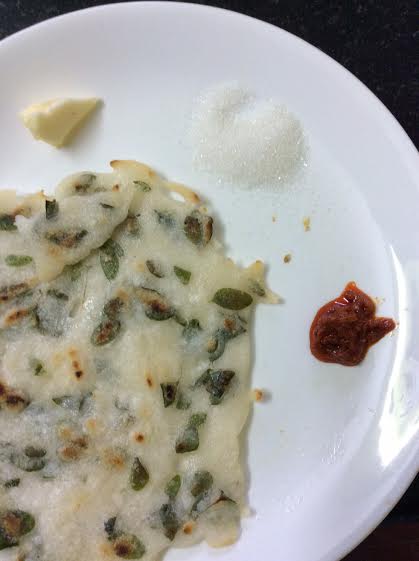Mistresses of jugaad – that’s what most Indian housewives of my mother’s generation are! No one in the world could possibly have polished this very fine art of making do as the Indian woman has done!
In my mom’s case, she started her culinary career rather late in life – having refused to get married and finally being persuaded into it at the (for her generation!) ripe old age of twenty seven, my mom had very little idea of the mysterious processes that went on in the kitchen to produce food! My dad was waaay ahead of her at this stage and between the two of them, they managed to not starve!
With two demanding professions however, a cook was called for and after a few hit and miss efforts, one arrived – all the way from Udipi! Now, Udipi, as everyone knows, is the undisputed capital of vegetarian cuisine – the guys there have polished this whole affair of vegetarianism to a fine art of sheer perfection! But. as everyone also knows, there is an exception to test every rule… and he arrived in the form of Narayana, our beloved cook from Udipi – who couldn’t cook even to save his life!
Between the two of them, my mom and he managed to satisfy their palates. My dad resigned himself to a life of undercooked/overcooked/slightly burnt and can be swallowed with a lot of water/very burnt and has to be chucked out-meals till they learnt how to cook – with an occasional injection of help from my grandmom who taught both mistress and cook how to cook! We… what did we know??!
Over the years though, my mom became quite accomplished at a few dishes though her approach to cooking has always smacked of something like Don Quixote tilting at windmills – we can beat this if we keep at it! And if we can’t, well, we’ve invented a new dish!! Ta-da!
This Ugadi, for instance, I call my mom to wish her. Ask if she’s made Ugadi pachadi – the sweet-sour-bitter-astringent combination of jaggery, raw mangoes and neem flowers that is supposed to signify all that the year ahead is going to bring us . She said “Yes, but I couldn’t get the neem flowers because you know, the flowers were too high and I can’t climb a tree. The boys (her grandchildren) came home late and I can’t expect them to climb a tree at eleven o’clock, can I?” she asks perfectly reasonably, as per her lights! Did I mention that my mom is eighty three?!
“So then, what did you do?” I ask.
“Oh, I just decided that this year, we needn’t deal with any bitter stuff so I made the Ugadi pachadi without any neem flowers (key ingredient btw!) and it was yummy!” she responds blithely!
Jugaad? She’d rewrite Indian history if she could!
All that Ugadi talk reminds me of this delicious pachadi which I had in my aunt’s house (thanks, Manju aunty!) – so simple, made of such a humble vegetable and so utterly delicious!
SORRAKAI PERUGU PACHADI/BOTTLE GOURD OR OPA THAYIR PACHADI/YOGURT CHUTNEY
- Bottle gourd (see pic) – peeled and grated – 2 cups – boil without a lid so that the water evaporates, along with a pinch of turmeric and a pinch of sugar till done – about 5- 6 minutes. Cool.
- Thick yogurt – 2 cups – whisked
Mix together and add salt.
MASALA
- Green chilies – 2
- Ginger – 1 cm piece
- Fresh coriander – 2 tbsp
- Coconut (optional) – 2 tbsp
- Jeera/cumin seeds – 1/2 tsp
Grind together to a smooth paste and mix with the other stuff.
Temper with mustard seeds, urad dal, one red chili and curry leaves.
Serve as a side with any mixed rice – like tamarind or tomato.
Want jugaad? Don’t have bottle gourd? Make do with ribbed gourd. Don’t have that too? Or any vegetable at all? Do without! Have leftover pacchadi? Dunk some vadas in it for a healthier dahi vada!






